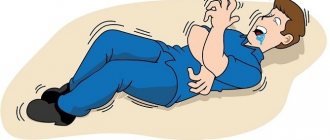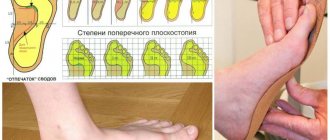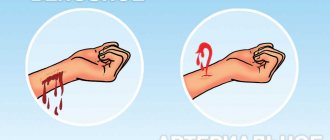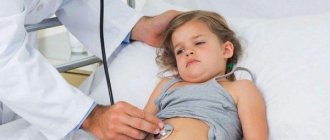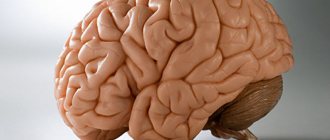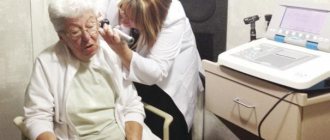The essence of the problem
The inflammatory process in children is severe, affecting the central nervous system and some internal organs.
This disease occurs most often in childhood and adolescence, and failure to take timely measures can lead to death.
The disease can have a primary and secondary mechanism of infection.
In the first case, direct infection occurs through contact with a carrier of the infection, and in the second, brain damage occurs as a result of complications of diseases of other organs, when the infection is transmitted hematogenously.
Diagnostics
Computed tomography of the brain is one of the ways to diagnose meningeal syndrome
Meningeal syndrome is only a preliminary diagnosis. Further actions of the doctor are reduced to identifying the root cause. For this purpose, instrumental and laboratory techniques are used.
First of all, the patient is sent for a lumbar puncture to obtain cerebrospinal fluid for testing. Analysis of cerebrospinal fluid can reveal signs of inflammation, as well as the causative agent of infection. If there are no changes in the cerebrospinal fluid (bacteria are not detected, and the composition is within normal limits), the patient is diagnosed with meningism, and further diagnosis is reduced to the search for conditions that can provoke the development of such symptoms.
To detect an inflammatory process in the body, a routine clinical blood test can be used. In this case, an increase in ESR and an increase in the level of leukocytes indicates the presence of inflammation.
To perform differential diagnosis, the following techniques are used:
- Magnetic resonance imaging.
- CT scan.
How to identify the disease at the initial stage?
The first signs of the disease in children appear to be the classic symptomatic triad:
Rigidity, i.e. spasm of the neck muscles. In this case, it is impossible to lower the head until the chin touches the chest, and when it is raised, the upper part of the body rises.
- Heat. It rises to 40 ºС, and reacts poorly to antipyretics.
- Confusion.
In expanded form, the initial signs of meningitis can be represented by the following list:
- Signs of general intoxication are fever, skin pallor, muscle and joint pain, shortness of breath, tachycardia, low blood pressure, constant thirst and dry mouth.
- Meningeal syndrome . The headache is constant, diffuse, intense, but sometimes has a frontal or occipital localization, it can be pulsating or compressive. There is dizziness and excessive sensitivity to bright light. Fountain vomiting is possible without preliminary nausea.
- Neurogenic symptoms - excessive and increasing agitation, hallucinations and blurred vision, stupor, confusion, seizures.
- Muscle stiffness. In addition to tension of the occipital muscle, the following disorders are noted:
- the legs do not straighten at the knee and hip joints (Kernig's symptom);
- spontaneous flexion of the lower extremities when the head is tilted forward (upper Brudzinski symptom);
- spontaneous flexion of the lower extremities with pressure in the area of the symphysis pubis (lower Brudzinski symptom);
- spontaneous lifting of the shoulders when pressing on the cheeks on both sides;
- forced pose - lying on your side with your head thrown back and your legs pressed to your stomach (“pointing dog pose”).
To prevent meningitis from causing serious complications, it is important to identify it at the earliest stage. That is why every parent should know the initial signs of illness in a child.
Symptoms of meningeal irritation
- headache accompanied by nausea/vomiting, often diffuse and more pronounced in the frontal and occipital parts
- stiffness of the neck muscles, Kernig and Brudzinski syndromes
- increased sensitivity to external stimuli (sound, light, etc.),
- heart rhythm disturbances (with the development of both tachycardia and bradycardia)
- “pointing dog” pose (the torso is extended, the head is thrown back, the “scaphoid” stomach is retracted, the arms are pressed to the chest, and the legs are drawn to the abdominal area - an involuntary position of the body).
- impaired consciousness - in severe cases
- decreased/absent tendon and abdominal reflexes
Vomiting (not associated with food intake) and bradycardia - due to irritation of the vagus nerve with its nuclei or the vomiting center of the reticular substance of the medulla oblongata.
Intense headache, tachycardia, vomiting are general cerebral symptoms indicating increased ICP and changes in the composition of the cerebrospinal fluid.
about what cerebrospinal fluid (CSF) is and how it is examined here
Both types of heart rhythm disturbances: tachycardia and bradycardia occur when the meninges are irritated.
Signs of meningitis in children 7-8 years old
Meningitis is accompanied by 3 main symptoms - intense headache not relieved by analgesics, fever and vomiting .
They appear against the background of hypersensitivity to bright light and sharp sounds. 4-5 days after the first symptoms, the temperature subsides and a temporary remission is noticed. The temporary lull in the disease is very deceptive, because... Parents sometimes attribute everything suffered to a cold and do not take action, but then the pathology enters the next stage, accompanied by severe complications.
After remission, signs of meningeal consequences appear . The most serious complications include the following pathologies: coma, cerebral edema, pneumonia, kidney failure, muscle paralysis.
Around the 2nd-3rd day of illness, children develop a reddish rash. After a short period of time, the rash becomes hemorrhagic, resembling bruises, and covers almost the entire body.
When such a rash appears, urgent hospitalization is necessary; it signals the onset of sepsis, which can be fatal.
At different ages, the symptoms of meningitis have certain specifics:
- Symptoms in children 6 years old . At this age, dryness of the mucous membrane of the oral cavity and eyes is especially evident. The child is not capable of swallowing movements. Intense vomiting is detected immediately after eating, and it does not bring relief. The child instinctively takes a characteristic pose (“the pose of a pointing dog”).
- Signs in a child 7-10 years old. The severe course of the disease is accompanied by a temperature below 40 ºС and severe pain in the abdominal area, reminiscent of acute poisoning. Characteristic signs are vomiting, redness and swelling on the face, clouding of the whites of the eyes. There is a delusional state and clouding of consciousness.
- Symptoms in adolescents 11 - 12 years old . The main manifestations of meningitis in adolescents are similar to the previous age category. The appearance of hypertrophied skin sensitivity is especially noticeable - children perceive any touch painfully. Mental disorders are serious - irritability, loss of spatial orientation, hallucinations.
According to the forms of the disease
Meningitis in children can occur in different forms depending on the etiological mechanism.
The most typical types of the disease are:
Cryptococcal meningitis. It is caused by infection with the fungus Cryptococcus neoformans. The disease is serous in nature and is accompanied by pinpoint hemorrhages in the meninges. A severe headache can lead to a coma. Extraneural lesions appearing in the lungs and on the skin are quite noticeable.
- Infectious meningitis. The most common infectious forms are hemophilic, pneumococcal and staphylo-streptococcal. Characterized by acute development with the manifestation of general and meningeal symptoms. The clinical picture shows a purulent variant of development with a sharp increase in manifestations in the first hours of the lesion. The temperature reaches 39.5-40 ºC with chills.
- Meningococcal and enteroviral meningitis. Meningococcal infection leads to a purulent form of the disease with a clinical picture typical of infectious meningitis. The enterovirus variety is serous in nature. General infectious and meningeal symptoms are characterized by moderate intensity. There are problems with the respiratory tract and gastrointestinal tract.
- Bacterial meningitis. This is the most common form, most often caused by Haemophilus influenzae. The main course is a purulent variant with rapid development and acute course. Severe headaches are noted, but muscle stiffness is found only in 70% of cases.
Prevention
To eliminate the risk of meningitis, vaccination is carried out. Currently, there are Haemophilus influenzae, meningococcal, and pneumococcal vaccines. Vaccinations against measles and chickenpox are given.
Prevention also includes hygiene, healthy eating, and physical activity.
Meningitis in children is characterized by rapid development dynamics. Therapy depends on the type, developmental characteristics and pathogen. Any delay in prescribing medications can lead to dangerous complications or even death.
Recognizing symptoms at home
Meningitis in a child under 10-12 years of age is determined by the characteristic manifestations of headache and vomiting, but it is often mistaken for an acute cold and acute respiratory viral infection. To clarify an independent diagnosis at home, the following tests are performed:
Determination of the tone of the occipital muscle by tilting the head . With meningitis, the chin cannot be brought to the chest.
- Brudzinski's sign . The child is placed in a supine position. One leg straightens and the other begins to bend. Spontaneous bending and straightening of the leg indicates the presence of a symptom of the disease.
- Kernig's sign . The child should be placed on his back. If noticeable resistance appears when bending the leg at the knee joint, pathology can be suspected.
Additional tests can be performed for pain symptoms:
- Light tapping on the cheekbones on both sides causes a sharp facial contraction (Bechterew's symptom).
- Light tapping on the skull causes a painful sensation (Pulatov's symptom).
- Palpation in the area of the ear canal causes pain (Mendelian symptom).
What is meningeal syndrome?
Meningeal syndrome is manifested by increased sensitivity to sounds (hyperacusis), light (photophobia)
This syndrome occurs with any type of inflammatory processes in the membranes of the brain. Its manifestations depend on the nature of the disease and the presence of complications.
As a rule, with meningeal syndrome, cerebral, meningeal and general infectious symptoms are observed. Along with them, inflammatory changes in the composition of the cerebrospinal fluid develop and liquor dynamics are disrupted.
General cerebral symptoms arise due to the reaction of the central nervous system to the processes that are triggered by inflammation of the meninges. They are observed due to irritation of the autonomic centers, cranial nerves and blood vessels.
Since the inflammatory process changes the composition of the cerebrospinal fluid, laboratory testing of the cerebrospinal fluid is necessary to definitively confirm the diagnosis of meningitis.
Reasons for the development of the syndrome
The cause of the development of meningeal syndrome is inflammatory or non-inflammatory irritation of the meninges, as a result of which intracranial pressure increases and tissue swelling is observed. As a result, irritation of the nerve endings of the brain is observed.
In most cases, meningeal syndrome occurs due to the development of the following diseases and conditions in the patient:
- CNS infections. In most cases it is meningitis.
- Traumatic brain injuries.
- Cerebrovascular diseases. These include cerebral hemorrhage and subarachnoid hemorrhage.
Meningeal syndrome can be detected even in a newborn. In such cases, the cause of the pathology is birth trauma or infection during childbirth.
In addition, there are a number of ailments with symptoms of damage to the meninges, when the cerebrospinal fluid remains unchanged, maintaining both pressure and composition. In this case, we can talk about meningism. This pathology can be provoked by the following factors:
- post-puncture syndrome;
- excessively long exposure to the sun;
- severe infectious diseases such as dysentery, influenza, salmonellosis, typhus, etc.;
- alcohol poisoning;
- malignant tumors in the brain;
- severe allergies;
- development of acute hypertensive encephalopathy;
- pseudotumor;
- uremia, etc.
Important! A number of diseases may manifest symptoms similar to those of meningeal syndrome, but do not cause damage to the meninges. In medical circles, such manifestations are called “pseudomeningeal syndrome.” It can occur with osteochondrosis of the cervical spine, diseases of the frontal lobe of the brain and some mental disorders.
Symptoms
The disease is characterized by very severe headache and nausea
Meningeal syndrome most often manifests itself with the following symptoms:
- High intensity headache.
- Nausea and profuse vomiting.
- Hypersensitivity to light, sound and touch. The patient tries to avoid any irritating factor by turning off the lights, closing the curtains, etc.
- Rigidity (inflexibility) of the neck muscles. The patient is unable to bend his head or bring his chin closer to his chest.
- The patient is in a specific position. Lying on his side, he throws his head back, while his stomach is pulled in and his back is arched backward. The limbs are bent and pressed to the stomach.
There are also a number of specific symptoms, the presence of which is usually checked by doctors to diagnose meningeal syndrome. The most popular among them are:
- Bekhterev's symptom. It is necessary to lightly tap on the patient's zygomatic arch. At the same time, his headache intensifies.
- Kernig's sign. The patient lies on his back, after which his leg is bent at the hip and knee joints at a right angle. Next, you need to straighten your shin so that it forms a straight line with your thigh. With meningeal syndrome, this cannot be done, since the muscles of the back of the thigh have reflex tension.
- Gordon's sign. The specialist squeezes the patient’s shin, which leads to extension of his left finger.
- Lesage's sign. This technique is used to detect the disease in children. It is necessary to lift the child, holding him by the armpits. If there is a disease, the baby's legs will be pulled towards the stomach.
- Guillain's sign. By squeezing the quadriceps muscle located on the patient's thigh, the doctor causes the same muscle in the other leg to contract.
- Brudzinski's symptoms (upper, middle and lower). In a patient lying on his back, as a result of certain actions of the doctor, his legs involuntarily bend at the knee joints.
Not all of the above symptoms are characterized by simultaneous manifestation. If at least a couple of them are present, the patient should consult a doctor as soon as possible.
Features of manifestation in children
When children become ill, their motor activity is reduced and their reaction to the surrounding reality is very weak.
Meningeal syndrome can develop in newborns. The cause of its appearance is a perinatal infection of the central nervous system or birth trauma. Infection of a child can occur at one of three stages:
- During the period of intrauterine development.
- At the time of birth.
- Some time after birth.
Diagnosing meningeal syndrome in children is complicated by the fact that their specific symptoms are mild or absent altogether. Therefore, you should pay attention to the following manifestations of the syndrome:
- Recession of a large fontanel. In some cases, it may become tight or bulge.
- Symptoms of central nervous system depression. The child has general weakness, his reflexes are depressed, and drowsiness appears. Motor activity is reduced, and the reaction to the surrounding reality is very weak. Muscular hypotonia is detected.
- Dysfunction of the brain stem. It manifests itself in the form of respiratory rhythm disturbances, eye movement disorders, and problems with pupillary reflexes.
- Hypertension syndrome. There is tremor, hyperesthesia of the head and skin, and a painful cry.
Why is meningeal syndrome dangerous?
This syndrome itself is a collection of symptoms. The diseases that caused the development of symptoms pose a danger to the health, and sometimes to the life of the patient.
Since we are talking about pathological processes in the meninges, the risk of disability and death in this case is very high. For this reason, it is necessary to consult a doctor when you notice the first symptoms of the disease.
First aid
The most important thing that parents should do if they suspect meningitis in their child is to call an ambulance as quickly as possible.
The arriving team of doctors sends the patient to the neurological department of the hospital for urgent hospitalization.
Primary care before hospitalization includes the following measures:
- Injection of antibiotics - Penicillin and Streptomycin.
- Symptomatic therapy is pain relief by injection of analgesics and dehydration by administering a solution of glucose or magnesium sulfate.
Meningeal symptoms (signs) in children and newborns
“Spotting dog” pose for meningeal syndrome.
There are certain features in the manifestation of meningeal symptoms in children. As Bekhterev once noted, in newborns Kernig’s syndrome is physiological. It appears a few hours after birth, and is pronounced in the first month of life, and disappears only by the end of the 3rd (rarely 6th) month.
In children under 3 years of age, a pronounced picture of meningeal syndromes is rare. The presence of headaches in infants can only be judged by the child’s general restlessness and crying (monotonous for no reason or screaming during sleep). Vomiting occurs (involuntary or when changing body position). Characteristic symptoms of increased ICP in infants include protrusion, tension of the fontanelles, weak pulsation and their absence.
In children under 3 years of age, just like in adults, stiff neck muscles occur, according to Kernig and Brudzinsky. A distinctive symptom is Lessage or “suspension”: the child is taken by the armpits, the head is supported from behind with the index fingers, and the child is lifted up (positive if the legs are involuntarily pulled towards the stomach and are fixed in a bent state for a long time). Meningeal syndromes in children over 3 years of age are no different from the same syndromes in adults.
Principles of treatment
Treatment of the disease should begin when the first signs appear. In this case, symptomatic manifestations disappear after 4-5 days, and the composition of the cerebrospinal fluid stabilizes after 7-10 days. Self-medication is extremely dangerous, because... leads to serious complications.
Treatment should be carried out by a pediatrician with the participation of a neurologist and an infectious disease specialist. The basis of treatment is antibiotic therapy, which depends on the type of pathogen. In particular, for the bacterial form of the disease, Ceftriaxone and Meronem are prescribed. In case of viral infection, dehydration therapy is of primary importance.
The first signs of pathology
Meningeal syndrome, regardless of the cause, is expressed by certain symptoms. The first signs of the disease look like this:
- Feeling of aching throughout the body, as if you have a cold;
- General lethargy and fatigue even after sleep;
- Increased heart rate;
- Disturbances in the respiratory system;
- Temperature rise above 39º.
Gradually, meningeal symptoms (signs) appear more and more intensely and new ones are added to the previous signs:
- Manifestation of convulsive attacks. This symptom occurs mainly in children. For adults, its occurrence is considered rare;
- Adopting a meningeal position;
- Development of abnormal reflexes;
- The occurrence of a headache. This symptom is the main one and manifests itself extremely intensely. The pain intensifies mainly due to external stimuli, for example, light, vibration, sound, sudden movements, etc. The nature of the pain is usually acute and it can radiate to other parts of the body (neck, arms, back);
- Vomiting due to severe headache;
- Development of hypersensitivity (hyperesthesia) to light, vibration, touch, sounds, etc.
- Rigidity (petrification) of the muscle tissue of the back of the head.
The combination of these symptoms represents meningeal syndrome. The degree of manifestation and combination of symptoms may be different, since this pathological process has many causes. The presence of pathology is determined mainly through instrumental examination (lumbar puncture, MRI, etc.), but initially you should pay attention to its main manifestations.
Complications
The most dangerous and high probability of an unfavorable prognosis, with subsequent complications, is the bacterial form.
The high rate of complications is associated with the increased ability of infectious bacteria to enter the blood and/or spread to nerve cells , causing:
- Sepsis . Sepsis (or blood poisoning) is a serious clinical inflammatory condition characterized by the persistent presence of bacteria in the bloodstream. ( Note: This should not be confused with bacteremia, which occurs due to the presence of bacteria in the blood, but in this case is short-lived.) Characteristic signs indicating the onset of sepsis in people with bacterial meningitis is the appearance of a skin rash characterized by red spots. Sepsis is a typical complication of bacterial meningitis and often results in death of the patient (especially very young ones).
- Encephalitis or myelitis . The term encephalitis refers to an inflammatory process affecting the elements that make up the brain. Myelitis indicates inflammation of the spinal cord. Encephalitis and myelitis can have many consequences, both temporary and permanent, including: hearing loss, memory loss, lack of concentration, balance and coordination, behavioral disorders, epilepsy, cerebral palsy (in very young children), speech difficulties and vision loss.
Viral and fungal meningitis are less dangerous than bacterial meningitis for at least two reasons: they do not cause sepsis and, less commonly (usually if not treated properly), encephalitis or myelitis. Therefore, in general, the risk of complications in the case of non-bacterial meningitis is much lower than in the case of bacterial meningitis.
Overall, hearing loss is one of the most common complications of meningitis, especially in younger patients.
To determine whether a condition may have caused a child to have a certain degree of deafness, doctors use a test specifically designed to measure acoustic abilities. Typically the best time to perform this test is 4-6 weeks after the little patient leaves the hospital.
The vital importance of innate reflexes in a newborn baby
Neonatologists identify about 15 vitally important unconditioned (innate) reflex reactions in a newborn baby. Moreover, some of them help the baby in the difficult process of birth. When they perform their function, they disappear. Another part is a kind of soil for the development of new ones. And the rest of the reactions play an important role in the formation of the child’s individuality.
Pediatric doctors distinguish 3 functional groups of unconditioned reflexes:
- To ensure the fullness of vital functions: respiratory, sucking, swallowing, spinal;
- Protects against environmental factors: cold, heat, bright light, wind and others;
- “For a while”: one of these, like holding your breath at birth.
How is meningitis spread?
People cough, sneeze, kiss and talk, releasing millions of small droplets from their bodies into the environment.
The droplets contain infectious agents. Therefore, their inhalation by healthy people nearby (within two meters) can lead to the transmission of the bacterium, virus or fungus responsible for the infection.
Once inhaled, the infectious agent can cause infection in the upper respiratory tract (nose and throat), but the infection can also enter the bloodstream and reach the meninges through the bloodstream. The subject will only develop meningitis if the pathogen reaches the meninges.
Is it possible to protect yourself from meningitis?
Not always and not all infectious agents that enter the meninges cause inflammation. This is because the brain has a very effective defense system known as the blood-brain barrier .
The blood-brain barrier acts as a filter against substances in the blood that are about to reach the brain. Among the filtered impurities there are also numerous infectious agents.
For a number of reasons (immunosuppression, strong viral or bacterial loads), the brain's natural defense system may not work correctly and may not cope with the task.
The passage of pathogens through the blood-brain barrier is the cause of infectious meningitis.
What contributes to the transmission of infection?
The transmission of meningitis (or, better, infectious agents) is facilitated by the presence of many people in the same room at the same time. It is for this reason that schoolchildren, university students, military personnel and, in general, anyone who frequently visits crowded places are especially at risk of getting sick.
It should be noted that two other important risk factors that contribute to the transmission of infection are: young age (children under 5 years of age are most at risk) and a state of immunosuppression - suppression of the immune system for one reason or another.
Conditioned reflexes in a newborn baby
Moro reflex
Known as fright. There are two phases of fear:
- The first is when the baby moves his arms to the side and opens his fists;
- The second (initial) – when the baby presses his arms to his body and clasps his fists tightly
The child reacts to loud sounds, sudden lifting of his legs, blows, knocks, and more. It is considered normal if the reflex occurs unexpectedly. Closer to four months, the reaction weakens, and later only its individual components are observed.
Kernig reflex
The child's legs, bent at the knees, try to straighten them at the joints of the pelvis and hips and move them to the sides. Given the correct development of the baby, this is impossible to do. The Kernig reaction is checked when the baby is 4 months old.
Automatic gait reflex
Response of the baby's central nervous system to walking. To check, you need to lift the baby and tilt his body a little forward. If the child steps on the entire leg, then development is proceeding correctly. If your feet catch on your feet, or you walk on tiptoes without placing your entire foot on the ground, it is advisable to tell your doctor about it.
Bauer reflex (crawling)
We place the child on his tummy, bring his legs together and place his palm on him. The baby will try to push off from the palm, bending and unbending its legs, and will begin to crawl.
Support reflex
The baby is not yet ready to stand, he is not yet strong, but the support reaction is already working. We take it under the arms and lift it vertically. Holding it in weight, the child will automatically tighten his legs, and placing him on the surface, the baby will straighten his body and stand on half-bent legs and on a full foot. The support works until the baby is 1.5 months old.
Galant reflex
Spinal reflex response. The child, when running a finger along the spine, will arch his back. At the same time, the head and legs will lower.
For what symptoms should such a check be carried out?
Brain damage is expressed by different signs. The main one is a severe headache. If it continues for a long time or is accompanied by other symptoms, it is necessary to check the patient for Kernig's or Brudzinski's sign. This is necessary to determine in time that inflammation has begun. In what cases is this diagnosis carried out:
- for severe headaches;
- convulsions;
- loss of appetite, nausea and vomiting;
- dizziness;
- disturbances of consciousness;
- increase in body temperature above 39º;
- patient disorientation, lethargy, severe weakness;
- hallucinations;
- stiffness of the neck muscles;
- often the patient takes a forced position - arching his back and drawing in his stomach.
The doctor will definitely check the patient for Kernig and Brudzinski symptoms if he has a head or spinal cord injury, severe purulent otitis media or sinusitis, sepsis and some other conditions.
Etiology of the disease
The pathology may be based on various pathogens that begin to develop against the background of a weakened immune system. Responsible for bacterial meningitis in children:
- pneumo- and meningococci;
- streptococci and staphylococci;
- hemophilus influenzae;
- tuberculosis;
- enterobacteria;
- spirochetes;
- rickettsia.
The aseptic type of disease is caused by viruses:
- enterovirus infection;
- microorganism Coxsackie;
- mumps, or so-called mumps;
- polio;
- encephalitis tick bite;
- chicken pox;
- rubella;
- measles;
- adeno- and ECHO viruses;
- herpes.
Symptoms appear a few hours after the attack, in rare cases - within a day. And also childhood meningitis can be caused by pathogenic fungi, malarial plasmodium or various types of helminths.
The infection is transmitted directly through mucus fragments when sneezing or coughing. Pathological pathogens enter the body through the nasopharynx. The disease has an incubation period, when symptoms have not yet appeared and the person is contagious. A number of pathologies can also cause meningitis:
- inflammatory infections in the respiratory system;
- otitis, adenoiditis;
- abnormal structure of the skull, deviated nasal septum, sinusitis;
- furunculosis localized on the front part, caries;
- avitaminosis.
The development of pathology in infants is provoked by:
- intrauterine infections;
- fetal prematurity;
- hypoxia during complicated childbirth.
At an early age, poor care, hypothermia, climate change and excessive physical activity contribute to the disease. The anomaly occurs against the background of an unformed immune system and weak resistance of the blood-brain barrier.
What is meningitis?
Meningitis is an inflammation of the membranes that surround and protect the brain and spinal cord (called the meninges ).
Meninges
The three meninges are comparable to pieces of paper superimposed on each other.
The meninges are located between the encephalic (in the case of the brain) or cerebral (in the case of the spinal cord) and the bony barrier that protects the main structures of the central nervous system (the skull in the brain and the spine in the spinal cord).
Inside, on the outer and inner sides, there are three meninges:
- Dura mater . A very thick membrane, it contains a complex network of venous vessels, which through the venous sinuses transport blood circulating to the central nervous system. The dura mater of the head is slightly different from the dura mater of the spinal cord. The first represents two plates, one acts as the periosteum, and the other runs along the gyrus of the brain. The second has the shape of a hollow cylinder and is separated from the vertebrae by an area rich in adipose tissue and venous blood vessels; this area is called the epidural space.
- Arachnoid mater . It owes its name to the fact that it is a web-like fabric. A space known as the subarachnoid space separates it from the inner meninges. The subarachnoid space contains part of the cerebrospinal fluid.
- Choroid (soft) meninges . Very thin and directly connected to the brain and spinal cord, it contains arteries that supply blood to the central nervous system.
Features of determining changes in pediatric patients
In children, meningeal symptoms are checked according to age. There are several main meningeal signs, these are the symptoms:
- “planting” - when trying to sit a child with straight legs, he bends them or tilts his body back with support on his hands;
- Lessage is relevant for children in the first year of life: the baby is lifted, holding the armpits, while the legs are pulled up to the stomach and remain in this position (normally, children move their legs, simulating a search for support);
- Lesage-Abrami - children are drowsy, quickly lose weight, they have disruptions in cardiovascular function;
- “kissing the knee” is characterized by the inability to touch the knees with the mouth while sitting.
In addition, in patients of early childhood, bulging of the large fontanelle is noted.
Treatment of viral meningitis
Viral meningitis does not pose a danger to adults, but children, pregnant women, elderly and HIV-infected patients require hospitalization, since for these categories of patients this disease threatens to develop serious complications, including death.
The treatment tactics for viral meningitis at the Yusupov Hospital depend on the etiology of the disease, the condition and age of the patient.
The main method of treating viral meningitis in the neurology clinic of the Yusupov Hospital is antibacterial therapy, using broad-spectrum drugs that help effectively destroy the infection, taking antiviral drugs and drug therapy aimed at eliminating the manifestations of the disease. But if the disease is provoked by an adeno- or enterovirus, the drugs adamantane and arbidol are prescribed. In cases where meningitis was caused by a herpes virus, acyclovir is prescribed.
Additionally, as symptomatic therapy, anticonvulsants, drugs that normalize intracranial pressure, and immunomodulatory drugs are prescribed. Detoxification therapy helps improve the patient’s well-being and reduces signs of intoxication.
To relieve headaches, analgesic drugs (baralgin, dexalgin, ketonal) and repeated spinal puncture are used. To eliminate vomiting, use cerucal. If there are signs of dehydration and severe intoxication, intravenous administration of drip-salt solutions (sodium chloride, Trisol, Ringer), glucose and plasma substitutes is prescribed.
If signs of gastroenteritis occur, patients are recommended to follow a dairy-free diet, use enzyme preparations, and use antispasmodic analgesics to relieve abdominal pain.
To reduce high fever, non-steroidal anti-inflammatory drugs are prescribed.
In most cases, viral meningitis has a favorable prognosis. The exception is neonatal encephalomyocarditis, which is more likely to be fatal. Even less commonly, encephalomyelitis is diagnosed, which may be accompanied by the development of paralytic syndrome or dementia of varying degrees.
Viral meningitis is a rather serious disease in children, so it must be treated exclusively in a hospital, under the close supervision of doctors. At the slightest alarm bell, you must immediately seek qualified medical help.
Diagnosis and treatment of meningitis is carried out in the leading multidisciplinary center in Moscow - the Yusupov Hospital.
The Neurology Clinic of the Yusupov Hospital is equipped with ultra-modern equipment that allows the use of advanced methods for diagnosing and treating meningitis. Our specialists constantly improve their skills, conduct scientific research and learn new technologies, thanks to which they manage to achieve the highest results in the treatment of meningitis of any form and etiology.
The Yusupov Hospital inpatient facility has all the conditions for the most comfortable stay for our patients: cozy rooms with all amenities, nutritious meals, round-the-clock care and support from qualified medical personnel.
You can make an appointment with a specialist at the Yusupov Hospital and find out the cost of the medical services provided by calling or visiting the clinic’s website. The coordinating doctor will answer all your questions.
Author
Boris Yuryevich Bobrov
Endovascular surgeon, Candidate of Medical Sciences. Laureate of the Russian Government Prize in the field of science and technology, laureate of the Vocation Award. The largest personal experience of EMA in Russia
Treatment: bacterial meningitis
In this case, doctors prescribe intravenous injections of antibiotics and corticosteroids. The main function of the latter is to suppress the existing inflammatory process. As with viral meningitis, the doctor prescribes the simultaneous use of several antibiotics (this could be Amoxil, Flemoxin, Benzylpenicillin). After identifying the bacteria that caused the disease, the only and most effective medicine is left.
To minimize the possible negative consequences of meningitis in children, experts recommend special saline solutions necessary to restore the water-salt balance in the body. It is very often disrupted due to high fever, vomiting and increased sweating.
The importance of correct diagnosis
Meningeal signs in neurology are important for correct diagnosis. Their manifestation most often indicates inflammation in the meninges. Meningeal signs may indicate serious illnesses such as:
- meningitis;
- severe purulent otitis media;
- sepsis of various origins;
- intracerebral hemorrhage;
- soft tissue abscess in the cervical region;
- TBI and back injuries;
- tumor disintegration.
Every qualified physician must be able to recognize these signs in order to correctly diagnose the disease and prescribe adequate treatment. Any symptoms indicating an inflammatory process in the meninges are grounds for a full examination of the patient.
Subsequent development in children
The disease progresses rapidly, so symptoms appear already during the incubation period. If a child has serous meningitis, then after the incubation period, the head begins to hurt severely, dizziness begins, the person constantly feels sick, and the appetite disappears.
IMPORTANT : negative symptoms of serous meningitis soften 5-7 days after the end of the incubation period. Or they disappear completely. This does not mean that the person has recovered; treatment cannot be stopped; the disease has a high chance of relapse.
With purulent meningitis, after the incubation period, the child begins to experience severe pain in the back of the head. The headache increases, the child is in a delirious state, and is overcome by convulsions. If the incubation period is over, you can become infected if the disease is caused by meningococcus or Haemophilus influenzae .
If people around a sick child are given an antibiotic, then infection is impossible.
When to see a doctor?
If you have any symptoms and signs that indicate meningitis ( note: symptoms cannot determine the type of disease), it is recommended to immediately consult a doctor or the nearest hospital for a detailed examination.
In fact, meningitis is a medical emergency, i.e. a condition in which the absence of diagnosis and timely treatment can cause serious consequences.
What should the therapy be like?
First of all, it should be noted that treating meningitis in children at home is unacceptable. Medical care should be provided only in a hospital setting and under the constant supervision of a qualified specialist. This disease is dangerous because the condition of a small patient at any moment can deteriorate somewhat and even become critical. In this case, emergency resuscitation measures are required, which can only be carried out in a clinical setting. Treatment of meningitis in children involves taking antiviral and appropriate antibacterial drugs, the choice and dosage of which depend on the form of the disease and the patient’s condition.
Competent therapy is important not only to eliminate the root cause, but also to restore the functioning of nerve cells and eliminate symptoms. To normalize the functioning of the central nervous system, the drugs Nootropil and Piracetam are most often prescribed. To get rid of the symptoms of toxicosis, the following drugs are recommended: Lasix, Torsemide.
The recovery period is usually 3-4 days if appropriate measures are taken without delay. Cerebrospinal fluid usually returns to normal within a week. Then a repeat puncture is prescribed. If the results are unsatisfactory, the doctor adjusts the therapy.
Other milestones on the path to diagnosis
In addition to the classic ones, there are other signs and symptoms of irritated meninges, such as:
- Lobzin's test - increased pain when pressure is applied to the wall of the external auditory canal;
- Flatau phenomenon - when the head is tilted forward, the patient’s pupils dilate;
- Bekhterev's test : with percussion of the zygomatic arch, the headache intensifies and a reflex contraction of the facial muscles occurs;
- Pulatovsky, or craniofacial reflex - the appearance of a grimace of pain even with the most gentle percussion of the skull.
As for children, the most significant are:
- Lesage's symptom (or hanging symptom) - a child with meningitis, raised by the armpits, pulls his legs to his stomach, holding them in this position until he is lowered;
- a symptom called “the sound of a cracked pot ,” which occurs when a large fontanelle is percussed in infants, as well as its painful tension and causeless bulging.
https://youtu.be/rcQIuMc7m6o
What diseases can be detected in this way?
We also recommend reading:
Why does my leg hurt below the knee?
Various pathologies and inflammatory diseases of the brain are quite common. They may be bacterial or viral in nature or caused by other reasons. But in all cases there will be a positive reaction to the Kernig and Brudzinsky symptom. They may appear weaker or stronger, depending on the nature of the damage to the meninges. It is important that such verification is carried out comprehensively. Only if several signs are present can a diagnosis be made.
But in any case, with severe headaches, it is advisable to check the patient using the Brudzinsky or Kernig method in order to prevent the development of complications. What diseases can be identified in this way:
Symptoms of meningitis
The symptomatology of infectious meningitis does not depend on whether it is caused by a virus, bacteria or fungus. In other words, the symptoms do not allow even the most experienced doctor to distinguish bacterial from viral or fungal meningitis.
After this important prerequisite, we can begin to actually describe the clinical manifestations in newborns and the elderly.
Symptoms in newborns and young children
In infants and very young children (under 5 years of age), infectious meningitis causes:
- high fever, characterized by cold hands and feet;
- vomiting and poor appetite;
- irritability;
- continuous and especially strong crying;
- drowsiness, weakness and inactivity;
- neck stiffness and photophobia (abnormal intolerance to light);
- apathetic appearance;
- enlarged head with fontanelle curved outward;
- convulsions or epileptic seizures;
- pale skin.
Causes of viral meningitis
Viral meningitis can initially develop independently, or be secondary, caused by an infection.
The most common etiological factor of viral meningitis is enterovirus infection, which primarily affects the mucous membrane of the large and small intestine. In addition, the causative agent of the disease can be the Epstein-Barr virus or the Coxsackie virus. In some rather rare cases, viral meningitis can be caused by cytomegalovirus, herpes virus, mumps virus, adenovirus and other viral infections.


